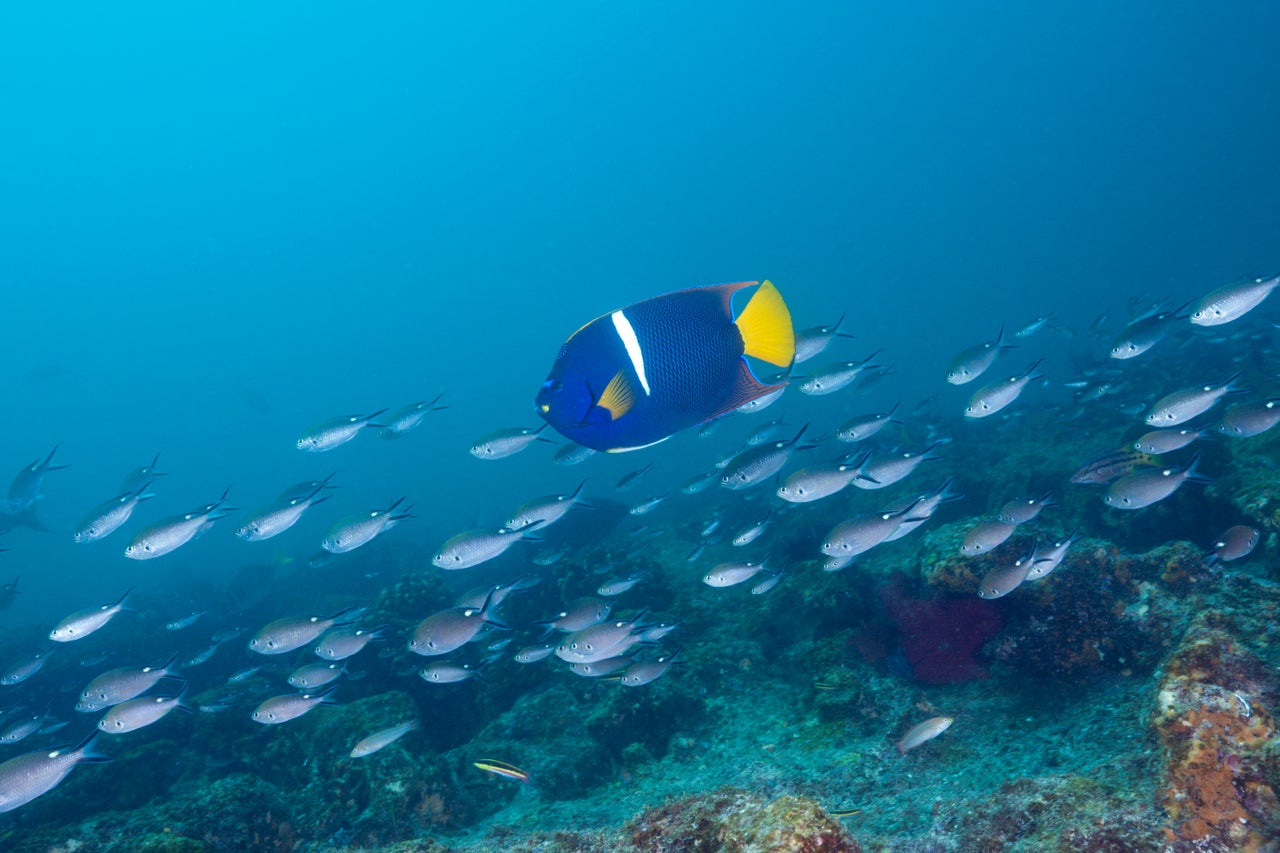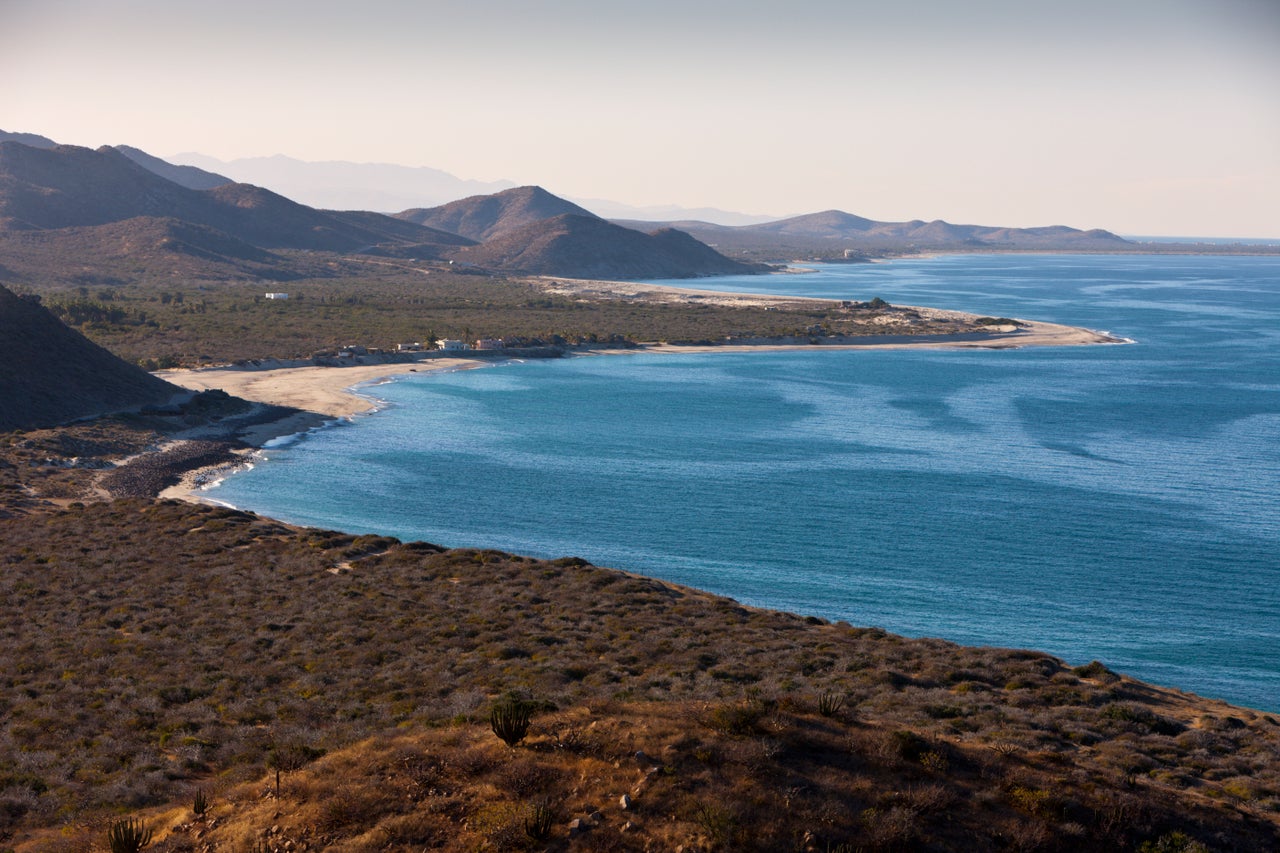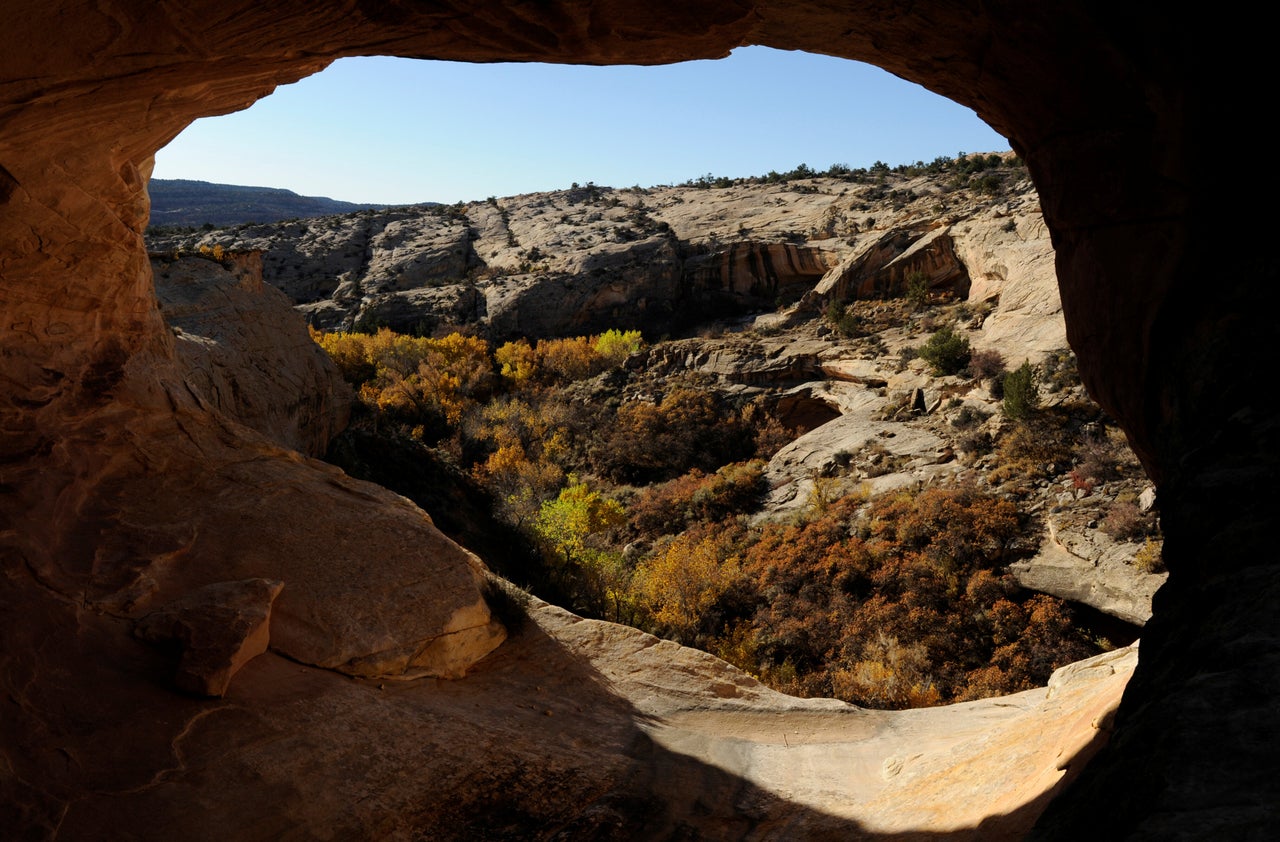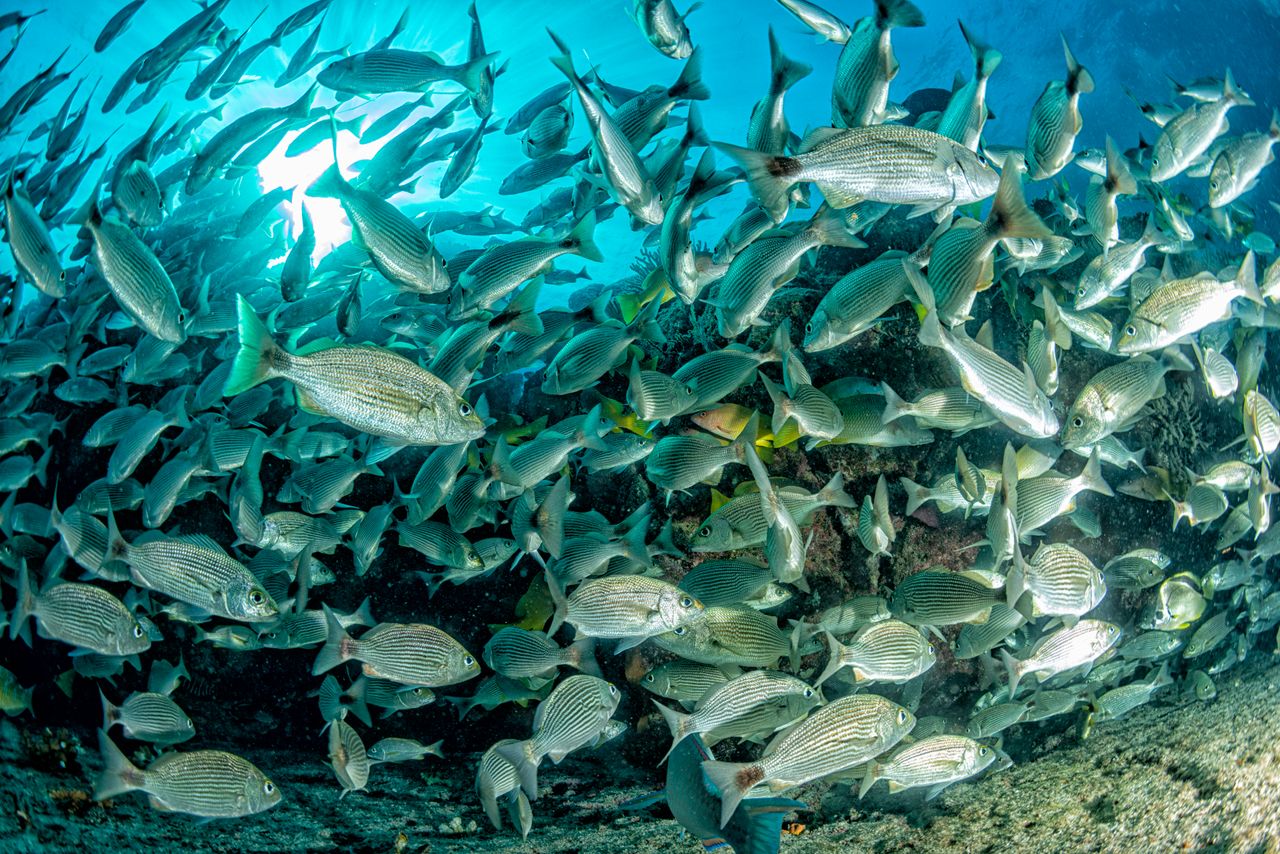An irradiated nuclear zone is hardly the most obvious animal sanctuary. But in January, almost a decade after Japan’s Fukushima disaster, scientists using remote cameras in the area around the abandoned power station discovered an abundance of wildlife.
Macaques, raccoon dogs (a relative of the fox), wild boar, pheasants ― over 20 species in all were found to be thriving in the absence of people.
It’s the latest piece of research to show that nature bounces back when humans are out of the way. And fortunately, this doesn’t require a nuclear disaster.

In 1995, faced with severely depleted fish stocks, the Mexican village of Cabo Pulmo decided to abandon its nets and campaign to establish a “no-take” marine reserve. Decades of overfishing had all but emptied the once-thriving coral reef of the colorful shoals the Sea of Cortez was renowned for, and the community feared for the future.
Fifteen years later, its waters were again teeming with life. A 2009 study found fish biomass had increased by 463%, to a level similar to that of reefs that have never been fished.
“The results were completely amazing,” said Octavio Aburto, the study’s author and director of the Gulf of California Marine Program, adding that top predators like bull sharks have returned to the once-depleted habitat. Those at the top of the food chain, often called “keystone species,” are critical to maintaining healthy ecosystems because they keep populations of smaller animals in check.
Such cases add fuel to a growing call for a more radical approach to conservation ― one that would ultimately give protected status to half the planet, putting existing wilderness off-limits and rewilding developed areas. Proponents argue that such action is vital to stem species extinctions and avert climate breakdown.

“We know from many studies all around the world that when we give space to nature, she comes back spectacularly,” said Enric Sala, explorer in residence at National Geographic. “And we know that when nature comes back, all the services that nature provides for us come back too.”
Harvard biologist E.O. Wilson proposed setting aside 50% of the planet for nature in his 2016 book, “Half Earth.” The idea was given fresh impetus in April 2019 when Sala and a group of fellow scientists published a paper calling for a target of preserving 30% of Earth in its natural state by 2030, in what they framed as a Global Deal for Nature.
Almost three million people around the world have since signed a petition backing the call, while a coalition of countries ― including Costa Rica, France and Senegal ― has pledged to push for a global commitment to the 30% target this year. In January, the figure was included in a draft text to be negotiated at a key United Nations meeting in October. The “30 by 30” goal is intended to be as important for nature as the Paris agreement is for climate change.
Sala said he is now confident that countries can reach an ambitious agreement, thanks in part to growing awareness of the critical role of natural habitats in tackling climate change. “Even if [our energy system] went 100% renewable, we still need forests and wetlands and healthy ecosystems to help us absorb all the CO2 we’ve put in the atmosphere,” he said. “The realization there is no solution to climate without biodiversity and vice versa has been key.”
The stakes could hardly be higher. U.N. scientists have said one million species now face extinction. A recent paper from the World Economic Forum named major biodiversity loss as one of the top five risks of the next decade and warned of the dire consequences to food and medical supplies if we fail to act.
But is protecting a third ― let alone half ― of the planet doable?
Today, the most generous estimates put currently protected areas at 15% of the Earth’s land and 7% of the oceans. Meanwhile, deforestation rates, for example, have accelerated in the past five years.
Success in habitat protection will depend on governments looking beyond the “easy metric” of area to the harder one of effective management, said Sarah Hameed, the California-based director of the Blue Parks Program at the Marine Conservation Institute, which gives out awards to exemplary marine reserves.
This means sufficient investment in surveillance and enforcement, she said, but above all in community engagement. Without buy-in from local people, you’re “very likely to see poaching problems,” Hameed said, noting that many of the habitats most in need of protection, like mangrove forests, are found on populated coastlines.
Part of the answer, Aburto argues, lies in mass-scale replication of the transformation of Cabo Pulmo, where locals now make more money from ecotourism than they ever did from fishing. He has co-authored a white paper calling for a worldwide map of similar communities and envisages a global network of small protected areas, led by local people and receiving government funding.
“The only thing we need is to invest in this model, rather than governments investing in subsidies for fishing or massive scale tourism development that only bring more extraction of natural resources,” he said.
But even in Cabo Pulmo, the tussle between nature and society is complex. Success has brought exploding visitor numbers and concerns those tourists could damage fragile corals, as well as growing interest from major hotel developers. While Aburto suggested that diving companies could stem the flow of tourists by raising their prices, he acknowledged this would likely be criticized as a “very capitalist approach.”

While Cabo Pulmo demonstrates that habitat protection can benefit both wildlife and local residents, some human rights activists have deep worries about how an ambitious, top-down conservation goal could affect people, especially in already vulnerable communities. Stephen Corry, director of the indigenous rights group Survival International, said at least 10 million people have been displaced by protected areas to date and described the push to create more as “deeply anti-people.”
A BuzzFeed investigation last year revealed that in the fight against poachers, the World Wildlife Fund had funded paramilitary groups who ended up being accused of atrocities ― including torture, murder and sexual assault ― against indigenous people who had been displaced in the name of conservation.
The whole notion of pristine nature as something separate from humans is a fabrication, Corry argues, pointing out that people like the Baka in Congo, whom plans for a new national park threaten to displace, have been managing the forest sustainably for thousands of years.
“It’s nonsense and of course it detracts from the real issue, which is overconsumption by the West,” he said. It is not indigenous people who are destroying habitats, said Corry, but rich countries’ insatiable desire for more stuff, which drives the ever-increasing thirst for land for industries like agriculture, timber and mining.
Sala said we can protect indigenous rights and tackle the drivers of climate change at the same time. Both goals require us to take on destructive fossil fuel lobbies and extractive industries ― those he described as wanting “to make money in the casino of the Titanic after hitting the iceberg.”
These industries hold big sway. In the U.S., for example, the Trump administration has been working to open up new lands for drilling and fracking and to roll back existing protections, from pollution regulations to the Endangered Species Act.
“Politically the environment in which we’re doing this work very much puts us on defense,” said Jenny Binstock, senior campaigner at the Sierra Club. Her team is currently rallying to protect a hard-won deal to balance conservation needs with renewable energy development and other land use requirements across 10.5 million acres of California desert, which the Trump administration has signaled it intends to roll back.
But Binstock remains optimistic about achieving the “30 by 30” goal, arguing that President Donald Trump’s “all-out assault on nature” has prompted a stronger national conversation about strategies to protect public lands and their potential to mitigate climate change.

She also pointed to a recent letter from a group of institutional investors urging energy, timber and mining firms not to take advantage of newly weakened regulations, as a sign that key sectors regard Trump’s wrecking ball as temporary. “I think there’s acknowledgment that these are not necessarily durable changes in a post-Trump America and so they’re not reliable investments,” she said.
Ultimately, conservation is never simple, Binstock said. “You’re constantly needing to negotiate amongst folks who use the land in many, many different ways. It’s not easy work at all, but it’s the work that we have to do together.”
For more content and to be part of the “This New World” community, follow our Facebook page.
HuffPost’s “This New World” series is funded by Partners for a New Economy and the Kendeda Fund. All content is editorially independent, with no influence or input from the foundations. If you have an idea or tip for the editorial series, send an email to thisnewworld@huffpost.com.
